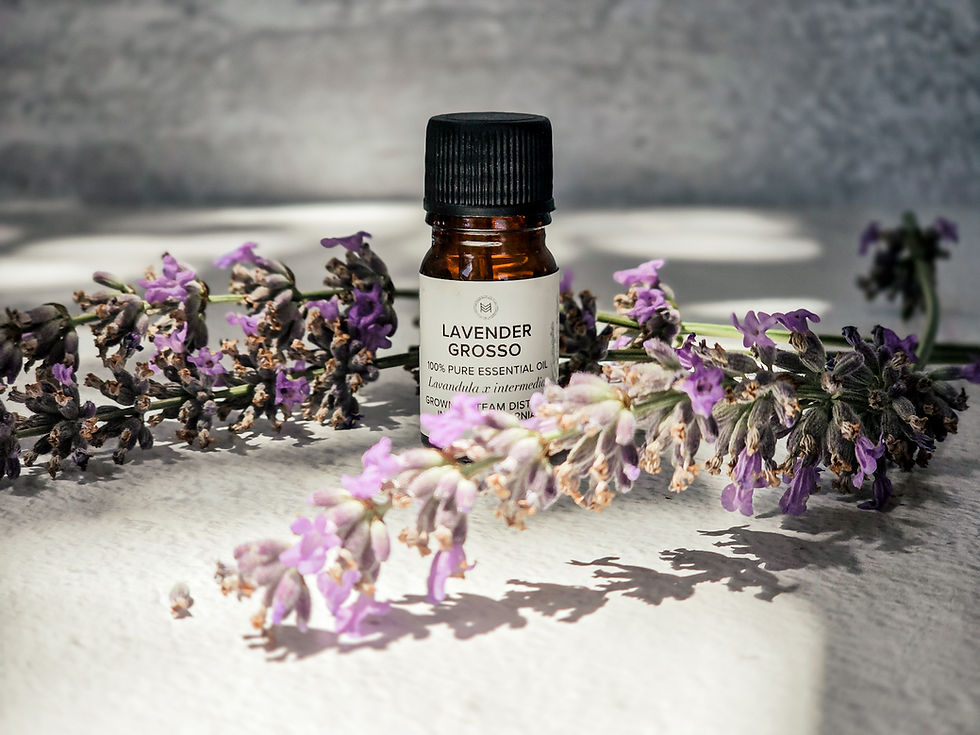The Health Risks of Synthetic Fragrances: Are You Putting Your Health at Risk?
- Anna Bazarnaya
- Jun 6, 2023
- 4 min read
Updated: Mar 30, 2024

Synthetic fragrances are omnipresent in our everyday lives. We encounter them in our perfumes, lotions, shampoos, candles, and even household cleaning products. These fragrances are created in a laboratory using a combination of synthetic chemicals to mimic the scent of natural substances such as flowers, fruits, and herbs. While synthetic fragrances may make our personal care and cleaning products more appealing, they may also pose serious health risks.
Here are some of the dangers of synthetic fragrances that you should be aware of:
Allergic reactions.
Synthetic fragrances are a common trigger for allergic reactions. According to the American Academy of Dermatology, fragrances are the leading cause of contact dermatitis, a skin condition that causes redness, itching, and inflammation. Symptoms of an allergic reaction to synthetic fragrances can range from mild to severe, including difficulty breathing and anaphylaxis in extreme cases.
Hormone disruption.
Many synthetic fragrances contain phthalates, a group of chemicals that are used to make plastic more flexible. Phthalates are known endocrine disruptors, which means they interfere with the body's hormone system. Exposure to phthalates has been linked to developmental and reproductive problems in both males and females, including reduced fertility, early puberty, and birth defects.
Respiratory problems.
Synthetic fragrances can also cause respiratory problems, particularly for people with asthma or other respiratory conditions. The chemicals in synthetic fragrances can irritate the lungs and trigger asthma attacks, coughing, and shortness of breath.
Environmental damage.
Synthetic fragrances don't just pose a risk to human health; they also harm the environment. Many of them are not biodegradable, which means they can accumulate in the environment and cause damage to wildlife and ecosystems. Additionally, the production and transportation of synthetic fragrances contribute to air and water pollution.
Lack of transparency.
One of the biggest problems with synthetic fragrances is the need for more transparency in listing their ingredients. Fragrance manufacturers are not required to disclose the individual components in their products, which means consumers have no way of knowing what chemicals they are being exposed to. This lack of clarity makes it difficult for makers and end consumers to make informed decisions and choices about the products they use and their potential risks.
What can you do to protect yourself from synthetic fragrances?
There are several steps you can take to reduce your exposure to synthetic fragrances:
Read labels carefully and choose products that are fragrance-free or contain essential oils as source of aroma.
Avoid air fresheners, scented candles, and other products that emit synthetic fragrances into the air.
Opt for products that disclose their ingredients and avoid those that use vague terms like "fragrance" or "parfum".
Look for products that have been certified by third-party organizations such as the Environmental Working Group or the Safer Choice program.
Make natural fragrances using essential oils, hydrosols, herbal extracts, resins, and other natural ingredients.
Are single component natural fragrances safe for me?
Single-component natural fragrances refer to fragrances derived from a single compound found in natural sources. These fragrances are created by isolating a specific compound from a plant or natural substance to capture its distinct aroma. You see a single component natural fragrance every time you see words like: geraniol, linalool, limonene, citral, menthol or linalyl acetate.
While natural fragrances may be perceived as "safer" or less harmful than synthetic fragrances, they can still contribute to allergic responses in some individuals. For example, isolating a single fragrant component from plants can sometimes cause more allergies than the whole essential oil because natural fragrances are complex mixtures of many different volatile organic compounds (VOCs). These VOCs work together in synergy to create the fragrance profile of the plant or essential oil.
Isolating a single fragrant component from plants can cause more allergies than using the whole essential oil because the natural fragrance compounds in essential oils often work together synergistically to produce their effects. When a single compound is isolated, it may be more potent and may have a different effect on the body than when it is used in combination with other compounds in the essential oil.
For example, some people who are allergic to limonene, a common fragrance compound found in citrus essential oils, may be able to tolerate the use of the whole essential oil. This is because the other compounds in the essential oil may modify the effect of limonene on the body or may counteract its potential allergenic properties.
In contrast, isolating a single compound like limonene may make it more concentrated and therefore more likely to cause an allergic reaction in people who are sensitive to it. This is because the body may be more likely to recognize and react to the concentrated form of the compound than when it is used in combination with other compounds in the essential oil.
Additionally, when a single compound is isolated, it may be more difficult for the body to metabolize and eliminate it, leading to a longer and more intense exposure and potentially increasing the risk of an allergic reaction.
In conclusion, synthetic fragrances may smell pleasant but have severe health and environmental risks. By choosing natural products and avoiding synthetic or single component natural fragrances whenever possible, you can protect yourself and your family from the potential dangers associated with these chemicals.





Comments